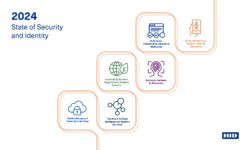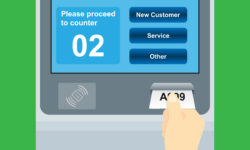Research: Purchaser Age Plays Role in Connected Lock Sales
The more a dealer knows about their customer’s buying habits and patterns, the better prepared they can be to ask the right questions.

In recent infographics, we’ve been examining the relationship between connected lock sales and various demographic elements. Any piece of information about a potential customer — no matter how seemingly trivial the piece of information is — can help a security or smart home dealer close a sale.
After all, the more a dealer knows about their customer’s buying habits and patterns, the better prepared they can be to ask the right questions and drill down to the customer’s primary “pain points.”
This new infographic [see below] shows the relationship between the purchase of connected electronic locks and the age of the purchaser. As with previous infographics, this new one is based on a random sample of 228 respondents who participated in a survey from TraQline, a company enlisted by leading residential lock manufacturer Kwikset to track purchasing habits and patterns.
As we can see, the highest number of purchasers were found in two age groups: 35-44 and 45-54, with 30% and 33%, respectively. What can we make of these numbers?
Certainly, these age groups would have a high likelihood of having the most children at home; between the ages of 35-54 (the two groups combined), couples generally produce as many children as they are going to want; consequently, there is extra attention paid to the family’s security.
The next highest purchaser group, 55-64, is probably seeing their kids head off to college or otherwise move out on their own, so while security is still critical, it might tail off a bit. Plus, since the children are likely older, the need for alerts when they come home, for example, is less critical.
By age 65+ (16%), many older residents, despite the aging-in-place trend, have entered assisted living or nursing home situations. What’s more, even the ones still at home are less likely to embrace the technology behind the smart connected lock. And speaking of aging in place, seniors who do have connected locks on their homes may not have bought them for themselves; adult children are often the ones making that purchase
At 13%, the 30-34 age range still represents a somewhat fertile group of potential customers. And at less than 1%, the under 18 crowd is either in college, living at home, or doesn’t have enough valuables to be particularly worried about security. What’s more, as many of us can attest, most 18-year-olds have much more of their minds than locks.
A somewhat surprising development is that the number of 18- to 24-year-olds made almost three times as many purchases (14%) as the 25-29 group (5%). One might expect that the younger group would be more likely to still be living at their parents’ homes and, if not, much less likely to have already started a family.
Are your marketing efforts targeting each group appropriately?

Art Sesnovich is a principal and co-founder of Bulldog Communications.
If you enjoyed this article and want to receive more valuable industry content like this, click here to sign up for our FREE digital newsletters!

Security Is Our Business, Too
For professionals who recommend, buy and install all types of electronic security equipment, a free subscription to Commercial Integrator + Security Sales & Integration is like having a consultant on call. You’ll find an ideal balance of technology and business coverage, with installation tips and techniques for products and updates on how to add to your bottom line.
A FREE subscription to the top resource for security and integration industry will prove to be invaluable.







